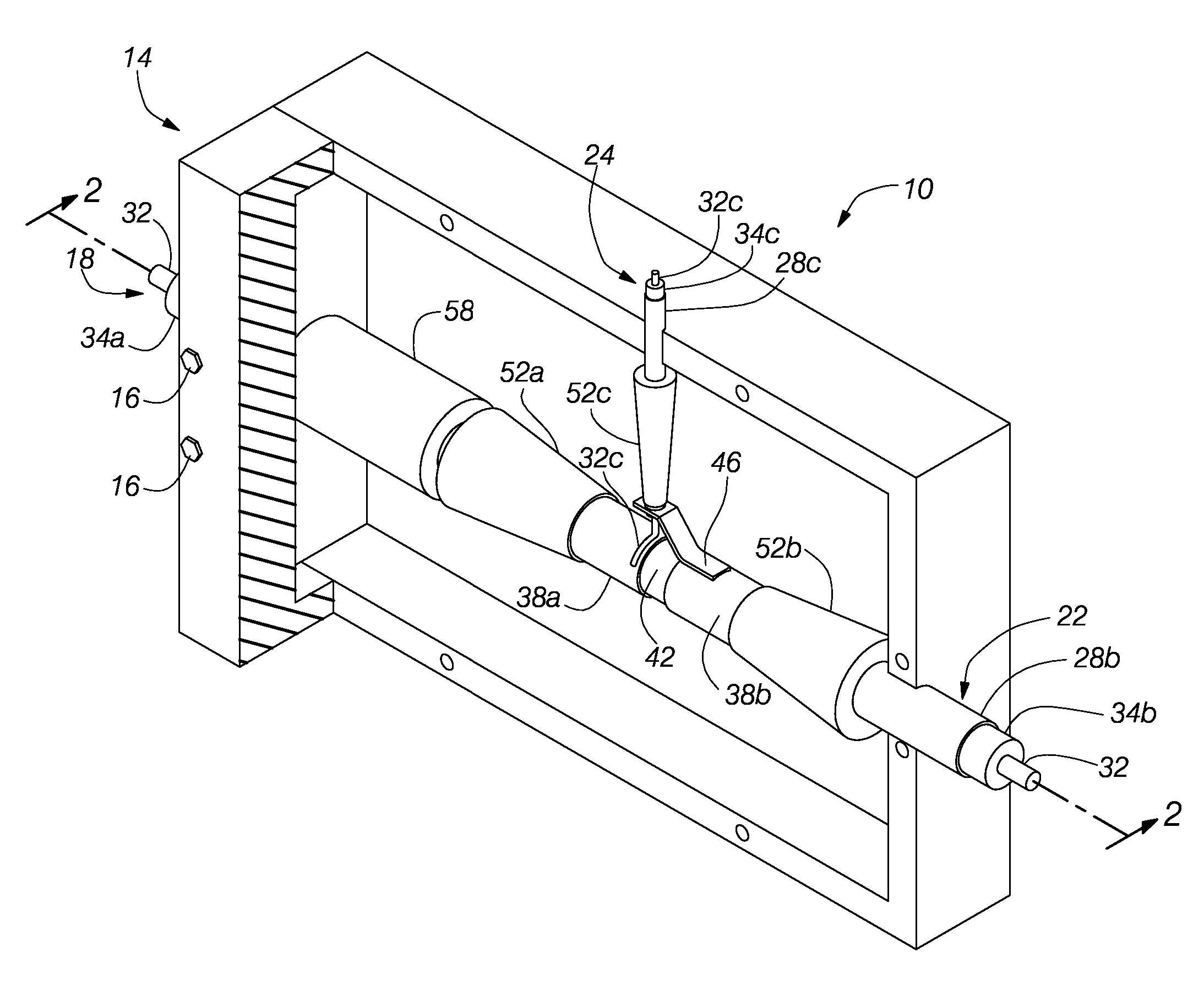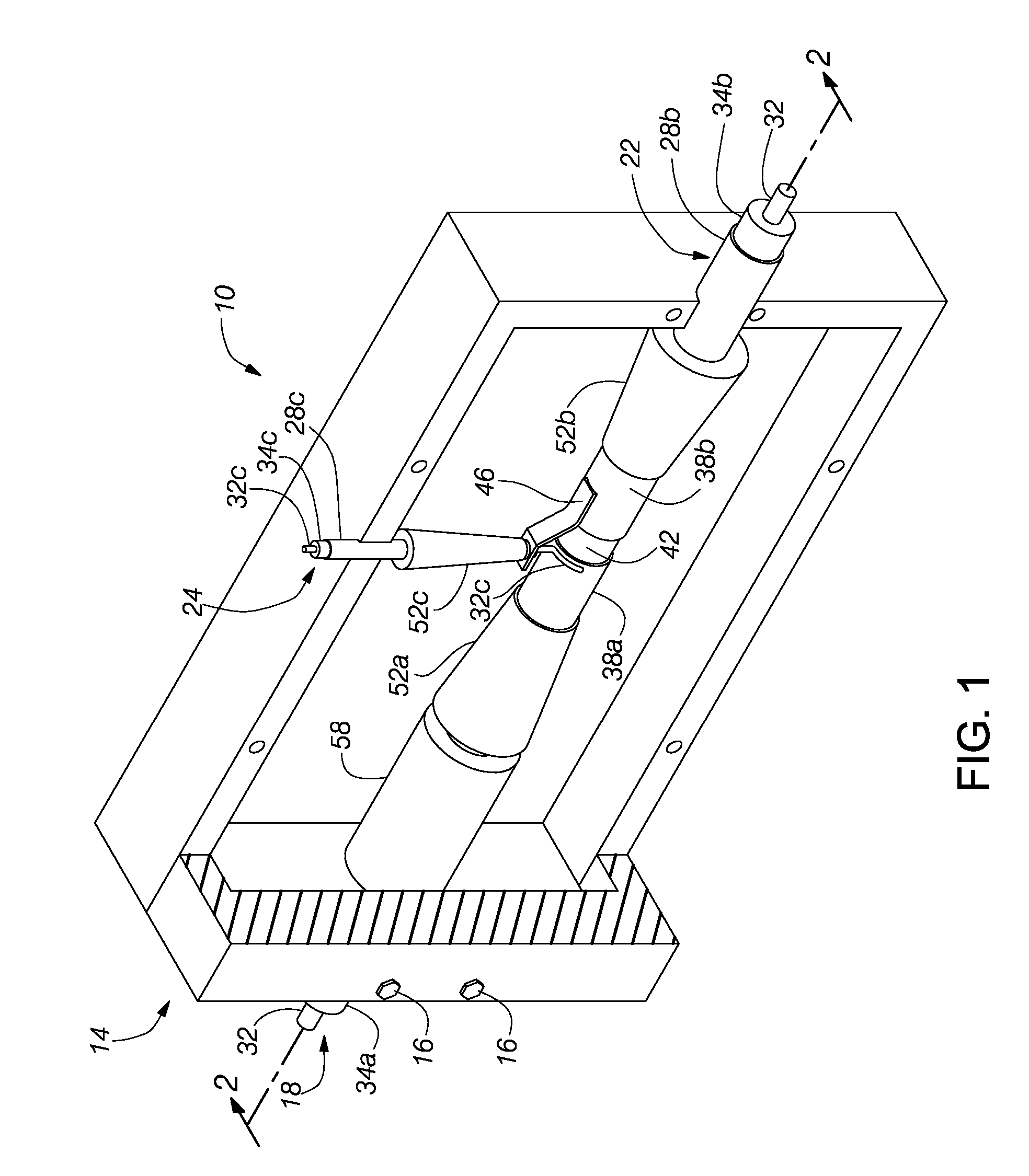Pulse current sensor
- Summary
- Abstract
- Description
- Claims
- Application Information
AI Technical Summary
Benefits of technology
Problems solved by technology
Method used
Image
Examples
Embodiment Construction
[0037] The following description and the accompanying drawings illustrate exemplary embodiments of a pulse coaxial current sensor. The description and drawings are intended to be illustrative of the inventions defined in the appended claims. In the drawings, like numerals refer to like parts throughout.
[0038] In FIG. 1, a pulse coaxial current sensor 10 utilizes an outer shield box 14 comprising a low-resistance metal, which is electrically and mechanically connected to an entrance coaxial conductor 18, an exit coaxial conductor 22, and a current sensor output (e.g., extraction) coaxial conductor 24. In a preferred embodiment, the metal shield box 14 comprises matched halves that are removable attached together utilizing a plurality of fasteners 16.
[0039] The entrance coaxial conductor 18 comprises an outer conductor 28a and an inner conductor 32. The outer conductor 28a and the inner conductor 32 are separated by an inner insulator 34a. The exit coaxial conductor 22 comprises an ...
PUM
 Login to View More
Login to View More Abstract
Description
Claims
Application Information
 Login to View More
Login to View More - R&D
- Intellectual Property
- Life Sciences
- Materials
- Tech Scout
- Unparalleled Data Quality
- Higher Quality Content
- 60% Fewer Hallucinations
Browse by: Latest US Patents, China's latest patents, Technical Efficacy Thesaurus, Application Domain, Technology Topic, Popular Technical Reports.
© 2025 PatSnap. All rights reserved.Legal|Privacy policy|Modern Slavery Act Transparency Statement|Sitemap|About US| Contact US: help@patsnap.com



